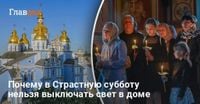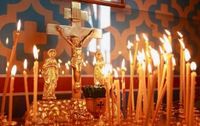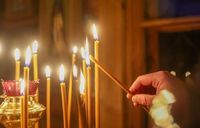On April 19, 2025, Orthodox Christians around the world will observe Holy Saturday, also known as Great Saturday, marking the final day of Holy Week and the conclusion of Lent. This day is steeped in solemnity and reflection, as it commemorates the entombment of Jesus Christ and the quiet anticipation of His resurrection on Easter Sunday.
Holy Saturday is a time for prayer, fasting, and introspection. It is a day that encapsulates the tension between sorrow and joy, as it stands on the threshold of the joyous celebration of Easter. According to tradition, on this day, Jesus' body lay in the tomb while His soul descended into hell to liberate the souls of the righteous.
As Orthodox Christians prepare for the significant feast of Easter, they engage in various spiritual practices. Churches hold special services, including the Divine Liturgy of Basil the Great, where the first hints of Easter joy are expressed through hymns and readings from the Old Testament that prophesy salvation. The Shroud, or Plashchanitsa, which symbolizes Christ's burial, is carried around the church during processions, reminding the faithful of the somber events leading up to the resurrection.
A notable event on Holy Saturday is the descent of the Holy Fire in the Church of the Holy Sepulchre in Jerusalem. This miraculous occurrence, which has been celebrated for centuries, signifies the resurrection of Christ. The Holy Fire is said to be a miraculous flame that does not burn upon first contact, and it is distributed to various countries, symbolizing the light of Christ spreading across the world.
In Moldova and many Eastern European countries, Holy Saturday is also a time for families to prepare for Easter. It is customary to clean the graves of loved ones, symbolizing respect and remembrance. Families often gather to bake Easter cakes, color eggs, and prepare baskets filled with traditional foods to be blessed in church. This preparation is not just about food; it is about spiritually readying oneself for the celebration of resurrection.
While Holy Saturday is a day of preparation, it is also marked by strict fasting. Tradition dictates that believers should refrain from consuming meat, dairy, and alcohol until the appearance of the first Easter star. Those unable to adhere to such strict fasts are encouraged to limit themselves to simple foods such as bread, water, fruits, and raw vegetables.
As families engage in festive preparations, the church emphasizes the importance of maintaining a spirit of quietude and reflection. Excessive celebration, loud music, and public displays of joy are generally frowned upon, as they are seen as disrespectful to the solemn nature of the day. Instead, believers are encouraged to cultivate an atmosphere of peace and contemplation, honoring the profound themes of sacrifice, forgiveness, and hope.
Moreover, various folk traditions enrich the observance of Holy Saturday. In some regions, young people gather to light bonfires, symbolizing the light of Christ overcoming darkness. It is believed that if the day is sunny, it foretells a bright and prosperous summer, while a cloudy day may indicate a rainy season ahead. Staying awake throughout the night in vigil is also considered auspicious, as it is a way to honor the resurrection and seek blessings for the year to come.
On this day, it is also customary to ask for forgiveness from family and friends, as well as to forgive those who have wronged you. This practice aligns with the themes of humility and grace that are central to the Easter message. Furthermore, it is advised to avoid negative behaviors such as arguing or holding grudges, as these actions are believed to bring ill fortune.
Holy Saturday is not only significant for its spiritual implications but also for its cultural traditions. Many families come together to share meals and engage in communal activities, fostering a sense of unity and belonging. The day serves as a reminder of the importance of family, faith, and community, reinforcing the bonds that hold individuals together during this sacred time.
As the evening approaches, believers gather in churches for the midnight service, which transitions into the joyous celebration of Easter. The atmosphere shifts from somber reflection to exuberant joy as the faithful proclaim the resurrection of Christ with hymns, bells, and celebratory chants. This moment is the culmination of their spiritual journey through Lent and Holy Week, representing hope and renewal.
In conclusion, Holy Saturday is a profound and multifaceted day within the Orthodox Christian tradition. It encapsulates themes of reflection, preparation, and anticipation, serving as a bridge between the sorrow of Christ's crucifixion and the joy of His resurrection. As the faithful engage in spiritual practices, family traditions, and communal worship, they are reminded of the deeper meanings of sacrifice, redemption, and the promise of new life. This day, rich in history and tradition, offers a unique opportunity for all individuals, regardless of their faith, to reflect on their own lives and the values that truly matter.






